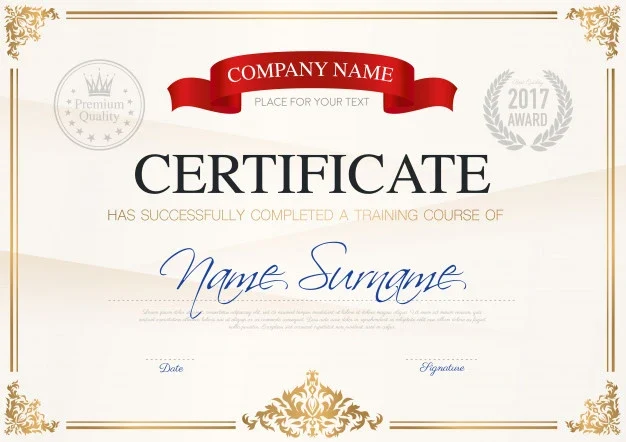Why enroll Redhat Linux
Why enroll for LINUX RHEL 8 course ?
Course Benefits
Duration of Training : 60 hrs
Batch type : weekdays /weekends/ Customized Batches
Mode of Training: Offline / Online / Corporate Training
Projects Given : 2 Projects minimum
Trainer Profile : Experienced Faculty from IT Industry
Projects | Assignment | Scenarios and Used Case Studies
Designations
- ALL COMBO COURSES
- PROGRAMMING COURSES
- NON PROGRAMMING COURSES


Want to become Engineer?


Want to become Engineer?


Want to become Engineer?
WhyTerraform ?
Multi-Cloud Support
Declarative Configuration
Resource Graph
Modularity and Reusability
State Management
Plan and Apply Workflow
Extensibility
About your Terraform Certification Course
Terraform Skills Covered
-
State Management
-
Terraform Modules
-
Dependency Management
-
Terraform CLI
-
Terraform Configuration Language (HCL)
-
Infrastructure as Code (IaC) Principles
-
Resource Provisioning
-
Terraform Providers
-
Terraform Workspaces
-
Terraform Best Practices
Curriculum Designed by Experts
Sharepoint Server 2013 Developer Course Syllabus
General Introduction
- What is IIS
- IIS Website & Web Application
- Steps to Create Multiple Website on Port 80
- What is Application Pool
- What is AppDomain
- What is ISAPI Filter / Extension
- Web Garden & Web Farm
- HTTPS and SSL
- Active Directory users and groups creation
Introduction to SharePoint 2013
- What is SharePoint
- High Level Features
- Six Pillars of SharePoint 2013
- Version History of SharePoint • Role of SharePoint Server in LAN.
- Components in SharePoint • Developers Onion View of SharePoint.
SharePoint as a Developer platform
- Hardware & Software Requirements
- Supported Browser
- Types of Installation
- Software’s to be Installed
- Central Administration Site
- Managed Accounts
SharePoint Site Hierarchy
- SharePoint Site Hierarchy
- Web Application
- Site Collection
- Creating Site and Sub Site • SharePoint site Home Page.
- Branding Site Look and Feel
- Working with Quota Templates
- Save Site as Template
- Create Site from Template
Introduction to Apps SharePoint 2013
- Overview of Apps
- Create Custom List
- Add Custom Columns
- Site Columns and Groups
- Sort and Filter List
- Create / Manage List View
- Content Type
- List Template
- Versioning of Data
- Metadata Navigation Settings
- List Throttling
Builtin Apps Configuration – List & Libraries
- Predefined List Apps • Predefined Library Apps.
- Editing Document properties
- Version Settings
- Check out, edit, and check in files.
- Create folders and navigate between them
- Adding Documents
- Library as Template
Server Object Model
- Using Microsoft.SharePoint.DLL
- Site Architecture and Object Overview
- SPWebApplication, SPSite, SPWeb, SPList and more…
- Sample Programs to understand the Object Model
Client Object Model
- Managed Object Model
- Silverlight Client Object Model
- Javascript Client Object Model
- Using SharePoint Web Services in Client Application
SharePoint Tools for Visual Studio 2013
- Visual Studio Project templates for SharePoint 2013
- Server Explorer, Feature Designer, Package Explorer
- Building and Deploying Solutions in Visual Studio 2013 for SharePoint 2013
Features
- SharePoint Root Directory
- Features Overview
- Features Scope
- Create a new feature and Deploying Features using VS2012
- Feature Events
- Manage SharePoint Solution (WSP) using PowerShell Commands
Event Receivers
- Event Handlers – Before events and After Events.
- Event receiver base classes.
- Registering Event Handlers
- Example of Before Events
- Programming After Events
Working with WebParts
- Building a Simple Web Part
- Editing Properties in Editor WebPart
- Visual Web Part
- Web Part Communication.
- Build and Deploy the Sandboxed Solution.
- Using Windows PowerShell for Administration Sandboxed Solutions.
Business Connectivity Service
- Creating a BDC Project in sharepoint designer
- Using Data in External List
- Granting Permissions to the BDC List.
Workflow
- What is Workflow
- SharePoint Workflows o 3- State Workflow o Approval Workflow
- Custom Workflow: Role of Visio 2010, SharePoint Designer 2010 and VS-2010
- Building Workflow with SharePoint Designer 2010
- Developing Workflow with Visual Studio 2010
- Adding Association Forms in harepoint designer 2010
- Its a new technology, every mnc nowadays using sharepoint for intranet portal such as Infosys, wipro,techmahindra etc.
- Using sharepoint its very easy to manage day to day tasks, HR policies, HR activities and other documents at various level within the corporate zone which is accessible by all.
- Sharepoint enables a document/policy to be:-
- Communicated at intranet level by developing a process involving coding
- Automating the process on the open platform
- Initializing its approval at senior level
- Making it accessible at common platform for both low and high level of the hierarchy.
- And thus the policy/document gets developed, processed,automated,approved and made accessible for the entire organization. Hence sharepoint plays a major role for freshers and experienced to enter into corporate field.
- Automation of the process is taken care by developer, it involves coding.
- Deployment of the process, its approach and maintaining is taken care by Admin.
- From fresher point of view opportunity lies more in sharepoint compared to oracle.
Companies such as TCS, L&T, Accenture target 0-2 yrs,2-4 yrs,5-6 yrs experience with good salary package.
- Even a non IT person can do good marketing for sharepoint for mnc, hence he can shift his career into IT sector.
- Sharepoint version is upgraded every year currently companies are going for 2013, however 2010 is still being used.
In Radical you will undergo training for both 2010 as well as 2013 as the trainer’s teaching way, course material and syllabus is covering both the version. Hence you will be very much able to differentiate between the versions.
- The upcoming version is 2016 which will be released in the market in another 2-3 yrs.
- Sharepoint Developer and Admin are two different tracks. If your good with programming coding etc you can go with developer profile or else you can go for admin, equal opportunity lies for both in the market.
Free Career Counselling
+91 8882400500
Global Certification
- Exam & Certification

Terraform Course Projects in Seattle
Multi-Cloud
Deployment
Highly Available Web Application
Infrastructure Governance and Compliance
Container Orchestration with Kubernetes
Infrastructure Monitoring and Logging
Disaster Recovery (DR) Setup
Microservices Architecture
Serverless Architecture
Hybrid Cloud Deployment
Continuous Integration and Delivery (CI/CD) Pipelines
Get Experience Of 4+ Years
- Projects
- Real Time Protection
- Assignments

-
Solution for BigData Problem
-
Open Source Technology
-
Based on open source platforms
-
Contains several tool for entire ETL data processing Framework
-
It can process Distributed data and no need to store entire data in centralized storage as it is required for SQL based tools.

-
Solution for BigData Problem
-
Open Source Technology
-
Based on open source platforms
-
Contains several tool for entire ETL data processing Framework
-
It can process Distributed data and no need to store entire data in centralized storage as it is required for SQL based tools.

-
Solution for BigData Problem
-
Open Source Technology
-
Based on open source platforms
-
Contains several tool for entire ETL data processing Framework
-
It can process Distributed data and no need to store entire data in centralized storage as it is required for SQL based tools.
Sharepoint Server 2013 Developer Course reviews
I had undergone oracle DBA course under Chetan sir's Guidance an it was a very good learning experience overall since they not only provide us with theoretical knowledge but also conduct lot of practical sessions which are really fruitful and also the way of teaching is very fine clear and crisp which is easier to understand, overall I had a great time for around 2 months, they really train you well.also make it a point to clear all your doubts and provide you with clear and in-depth concepts hence hope to join sometime again
I have completed Oracle DBA 11g from Radical technology pune. Excellent trainer (chetna gupta). The trainer kept the energy level up and kept us interested throughout. Very practical, hands on experience. Gave us real-time examples, excellent tips and hints. It was a great experience with Radical technologies.
Linux learning with Anand sir is truly different experience... I don't have any idea about Linux and system but Anand sir taught with scratch...He has a great knowledge and the best trainer...he can solve all your queries related to Linux in very simple way and giving nice examples... 100 to Anand Sir.
I had a wonderful experience in Radical technologies where i did training in Hadoop development under the guidance of Shanit Sir. He started from the very basic and covered and shared everything he knew in this field. He was brilliant and had a lot of experience in this field. We did hands on for every topic we covered, and that's the most important thing because honestly theoretical knowledge cannot land you a job.
I have recently completed Linux course under Anand Sir and can assuredly say that it is definitely the best Linux course in Pune. Since most of the Linux courses from other sources are strictly focused on clearing the certification, they will not provide an insight into real-world server administration, but that is not the case with Anand Sir's course. Anand Sir being an experienced IT infrastructure professional has an excellent understanding of how a data center works and all these information is seamlessly integrated into his classes.
Redhat Linux System Administration - Roles and Responsibilities
1. Basic user account management (creating, modifying, and deleting users).
2. Password resets and account unlocks.
3. Basic file system navigation and management (creating, deleting, and modifying files and directories).
4. Basic troubleshooting of network connectivity issues.
5. Basic software installation and package management (installing and updating software packages).
6. Viewing system logs and checking for errors or warnings.
7. Running basic system health checks (CPU, memory, disk space).
8. Restarting services or daemons.
9. Monitoring system performance using basic tools (top, df, free).
10. Running basic commands to gather system information (uname, hostname, ifconfig).
1. Intermediate user account management (setting permissions, managing groups).
2. Configuring network interfaces and troubleshooting network connectivity issues.
3. Managing file system permissions and access control lists (ACLs).
4. Performing backups and restores of files and directories.
5. Installing and configuring system monitoring tools (Nagios, Zabbix).
6. Analyzing system logs for troubleshooting purposes.
7. Configuring and managing software repositories.
8. Configuring and managing system services (systemd, init.d).
9. Performing system updates and patch management.
10. Monitoring and managing system resources (CPU, memory, disk I/O).
1. Advanced user account management (LDAP integration, single sign-on).
2. Configuring and managing network services (DNS, DHCP, LDAP).
3. Configuring and managing storage solutions (RAID, LVM, NFS).
4. Implementing and managing security policies (firewall rules, SELinux).
5. Implementing and managing system backups and disaster recovery plans.
6. Configuring and managing virtualization platforms (KVM, VMware).
7. Performance tuning and optimization of system resources.
8. Implementing and managing high availability solutions (clustering, load balancing).
9. Automating system administration tasks using scripting (Bash, Python).
10. Managing system configurations using configuration management tools (Ansible, Puppet).
1. Learning basic shell scripting for automation tasks. 2. Understanding file system permissions and ownership. 3. Learning basic networking concepts (IP addressing, routing). 4. Learning how to use package management tools effectively. 5. Familiarizing with common Linux commands and utilities. 6. Understanding basic system architecture and components. 7. Learning basic troubleshooting techniques and methodologies. 8. Familiarizing with basic security principles and best practices. 9. Learning how to interpret system logs and diagnostic output. 10. Understanding the role and importance of system backups and restores.
1. Advanced scripting and automation techniques (error handling, loops).
2. Understanding advanced networking concepts (VLANs, subnetting).
3. Familiarizing with advanced storage technologies (SAN, NAS).
4. Learning advanced security concepts and techniques (encryption, PKI).
5. Understanding advanced system performance tuning techniques.
6. Learning advanced troubleshooting methodologies (root cause analysis).
7. Implementing and managing virtualization and cloud technologies.
8. Configuring and managing advanced network services (VPN, IDS/IPS).
9. Implementing and managing containerization technologies (Docker, Kubernetes).
10. Understanding enterprise-level IT governance and compliance requirements.
1. Designing and implementing complex IT infrastructure solutions. 2. Architecting and implementing highly available and scalable systems. 3. Developing and implementing disaster recovery and business continuity plans. 4. Conducting security audits and vulnerability assessments. 5. Implementing and managing advanced monitoring and alerting systems. 6. Developing custom automation solutions tailored to specific business needs. 7. Providing leadership and mentorship to junior team members. 8. Collaborating with other IT teams on cross-functional projects. 9. Evaluating new technologies and making recommendations for adoption. 10. Participating in industry conferences, workshops, and training programs.
Course Features
- Lectures 0
- Quizzes 0
- Duration 10 weeks
- Skill level All levels
- Language English
- Students 0
- Assessments Yes






